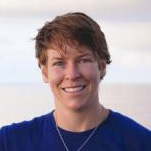COBRA Webinar – May 2024
Dr. Cherisse Du Preez (Head of the Deep-sea Ecology Program, Fisheries and Oceans Canada, Adjunct at the University of Victoria, and Co-founder and Lead of NEPDEP)
I used to think, “If A, then B” was the magic formula science was dutifully pursuing—a good old linear relationship with irrefutable p-value. As I start my mid-career era, I can confidently say the real magic is actually in the seemingly impossible-to-untangle interwoven tapestry that is the real and natural world. Don’t get me wrong, I’m still a big fan of lines. I basically draw lines for a living. My team, partners, and I primarily use deep-sea footage to support drawing meaningful lines around ecosystems, between species, connecting places, and designing MPAs. But, despite our affinity for the linear, it would appear nature abhors a line (maybe even more than a vacuum, and that’s awesome!). In this webinar, I’ll share enchanting and important stories from NEPDEP illustrating the beauty and wonder that unfold when nature refuses to conform to our rigid structures and expectations (i.e., almost always in the deep). Our new UN Ocean Decade Action is a grassroots collective of scientists from Federal and Indigenous governments, non-profit institutions, and academia dedicated to pushing the boundaries of knowledge deep beneath the waves. While focusing on Pacific Canada, we contribute to the global understanding of the deep through the International Seabed Authority, Challenger 150, and Seabed 2030.
Resources from the talk:
- Monitoring Framework for SG̲áan K̲ínghlas-Bowie Seamount Marine Protected Area, British Columbia, Canada. 2023. DFO Canadian Science Advisory Secretariat, Pacific Region Science Advisory Report 2023/011.
- Identification of Ecologically or Biologically Significant Marine Areas (EBSAs) in Areas Beyond National Jurisdiction (ABNJ): the Northwest Pacific Seamounts. 2023. Canadian Technical Report of Fisheries and Aquatic Sciences 3571.
- Salmon Shark (Lamna ditropis) scratching behaviour using floating anthropogenic debris. 2022. The Canadian Field-Naturalist 136(3): 274–280.

